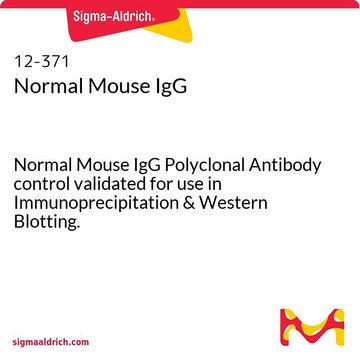I4131
IgG from rat serum
reagent grade, ≥95% (SDS-PAGE), essentially salt-free, lyophilized powder
Synonym(s):
Rat IgG
About This Item
Recommended Products
conjugate
unconjugated
Quality Level
grade
reagent grade
Assay
≥95% (SDS-PAGE)
form
essentially salt-free, lyophilized powder
storage temp.
2-8°C
target post-translational modification
unmodified
Looking for similar products? Visit Product Comparison Guide
General description
Application
- in immunolabeling[3]
- in flow cytometry[4]
- in enzyme linked immunosorbent assay[5]
- as a control in neutrophil depletion assay[6]
Biochem/physiol Actions
Disclaimer
Storage Class Code
11 - Combustible Solids
WGK
WGK 3
Flash Point(F)
Not applicable
Flash Point(C)
Not applicable
Personal Protective Equipment
Certificates of Analysis (COA)
Search for Certificates of Analysis (COA) by entering the products Lot/Batch Number. Lot and Batch Numbers can be found on a product’s label following the words ‘Lot’ or ‘Batch’.
Need A Sample COA?
This is a sample Certificate of Analysis (COA) and may not represent a recently manufactured lot of this specific product.
Already Own This Product?
Find documentation for the products that you have recently purchased in the Document Library.
Customers Also Viewed
Articles
Ago RIP to Isolate microRNA and their Targets Using Imprint® RNA Immunoprecipitation Kit
Protocols
Protocol for Anti Ago-RNA Immunoprecipitation from mammalian cells using the RIP kit
Our team of scientists has experience in all areas of research including Life Science, Material Science, Chemical Synthesis, Chromatography, Analytical and many others.
Contact Technical Service
